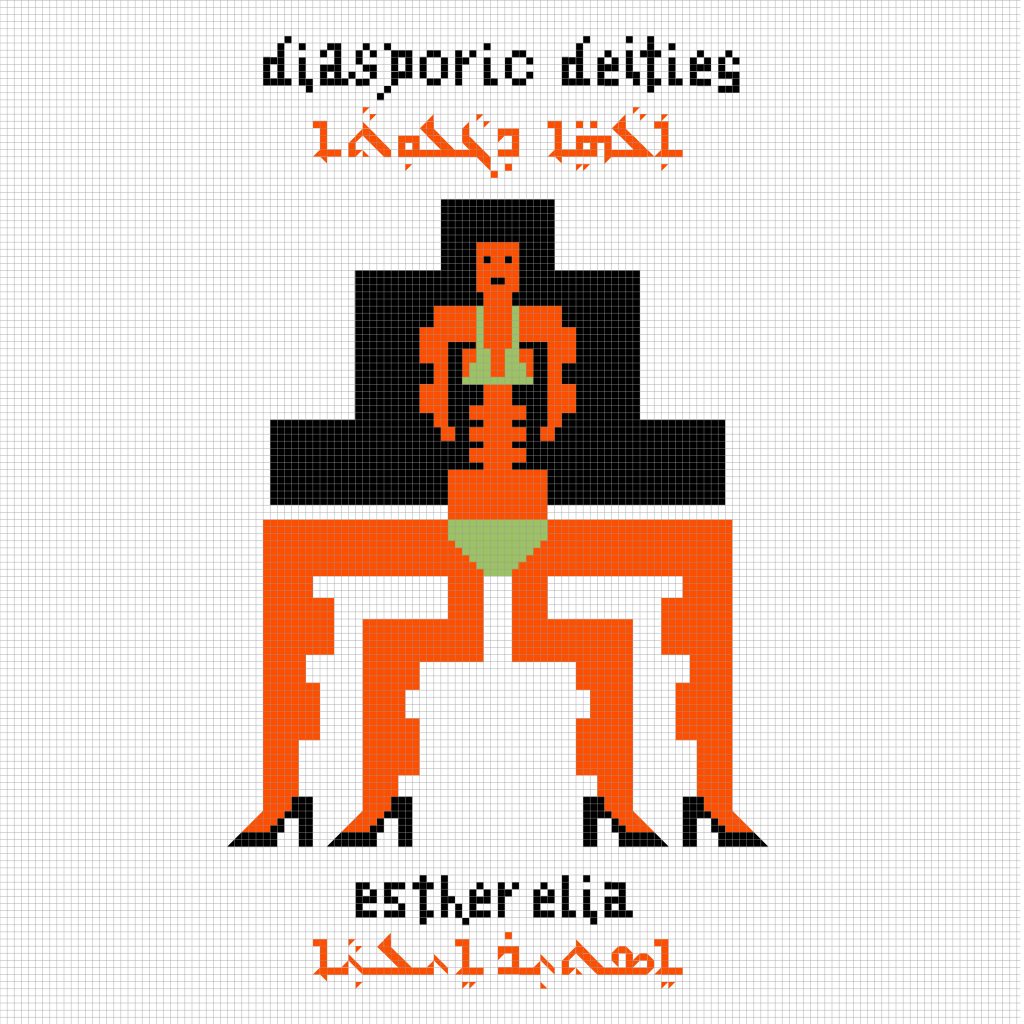Diasporic Deities

Diasporic Deities
Esther Elia
February 3-24, 2023
Opening: February 3, 5-8 pm
Zuyakha/Celebration:
Saturday, February 4, 5:30
*Performance starts at 6:00 pm with traditional Assyrian food and dancing.
Sanitary Tortilla Factory is pleased to present Diasporic Deities by UNM College of Fine Art’s MFA Candidate and Exceptional Visual Art Scholar (EVAS) Awardee Esther Elia. EVAS is a series that offers professional space for Master of Fine Art graduate students as their final thesis show. The culminating exhibition launches them into their profession as an artist. With the series, we underscore exceptional artists attending regional institutions while highlighting Albuquerque’s innovative contemporary art scene.
If one were looking for an Assyrian, they are most easily found in the Met, the British Museum, and the Louvre, most likely correcting unwitting docents who casually referred to Assyrians in the past tense. The Assyrian Indigenous homeland is the intersection of modern-day Turkey, Syria, Iran, and Iraq. Many years ago, museums were built to house the fantastic treasures of our monumental carved lamassu that were originally stationed outside of Assyrian cities like Nineveh. Unearthed bas reliefs that lined palace walls and portrayed the victories of the Assyrian kings Sargon, Sannacherib, and Ashurbanipal were taken from the land of their conception and transplanted, a sort of prophecy of what was to come for the Assyrian people themselves. These sculptures spoke to the Western imagination, a tale of the great kingdoms of the past, and created a folklore of a time and people they decided must be long gone.
So what of the living, breathing Assyrians? Today they are a religious and ethnic minority, survivors of multiple genocides throughout the 19th and 20th centuries, scattered across the world in tight-knit communities within their Indigenous homelands and diaspora.
This is the basis of the monumental sculptures and large-scale paintings shown in Esther Elia’s MFA Thesis Exhibition, Diasporic Deities. Through the use of material and the visual impacts of diaspora, Elia documents the next phase of the Assyrian identity. While ancient Assyrian art documented the deities that were born out of the Mesopotamian landscape, Elia imagines how these deities have shifted in diaspora. They take on new faces, new occupations – rooted in homeland, and yet evolving to reflect the needs of a generation exiled from their Indigenous home. These “new deities” also echo the fertility goddesses that we carried around with us in the past, their exaggerated features showing up in new ways with multiple limbs, muscles, and bodybuilder competition bikinis. In essence, our strength becomes exaggerated, for we are in less need of fertility and in more need of muscle. These grandchildren of our pantheon are portraits of our women stolen, and our nation’s fertility co-opted most recently by the ISIS invasions. These tiled structures stand strong, winged, multi-limbed, and muscular – the new protective deities for the contemporary Assyrian.
Artist Bio:
Esther Elia was born and raised in Turlock, California. She received a BFA in Illustration from California College of the Arts in 2019, and is currently finishing a Masters of Fine Arts in Painting/Drawing from the University of New Mexico. Her work focuses on the Assyrian experience, the maintaining and creation of culture in diaspora, and revitalizing Assyrian ritual practices through sculpture and large-scale paintings. She, along with other Assyrian visual artists, are working to combat the notion that Assyrian Art can and does only exist within the ancient past by collecting and displaying contemporary oral histories, painting living Assyrian faces, speaking and examining the Assyrian language, and documenting Assyrian culture as it continues to grow and shift both in our indigenous homeland and diaspora.
Her work has focused in the past on the refugee experience, and addresses more broadly the mindset that is obsessed with the pursuit of safety. In her new series of diasporic deities, she draws from the grid of the rug and cultural practices of tiling to create blocky sculptures that reference Afghan war rugs. Just as villages documented unfamiliar Soviet weapons of war in their kilims, so I too am combining the new with the old, my diasporic environment showing up and taking shape within ancient references. Esther’s work has been shown in the deYoung museum, she has done murals in Iraq and California Facebook offices, was accepted to participate in the 2022 Guggenheim Summer College Workshop, and has most recently won the 2022 Assyrian Academic Research Grant for her project The Assyrian Prayer Bowl Archive.
